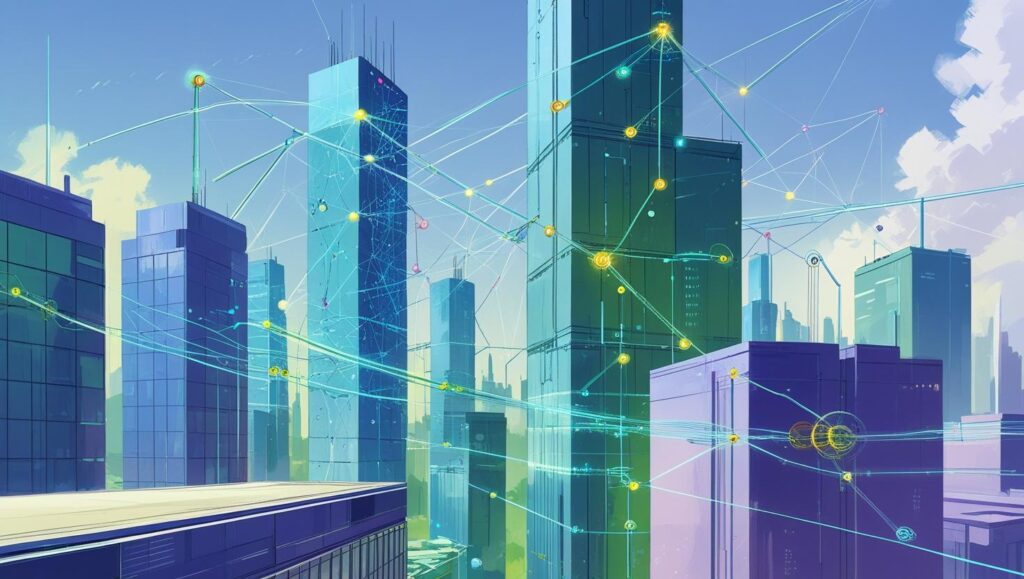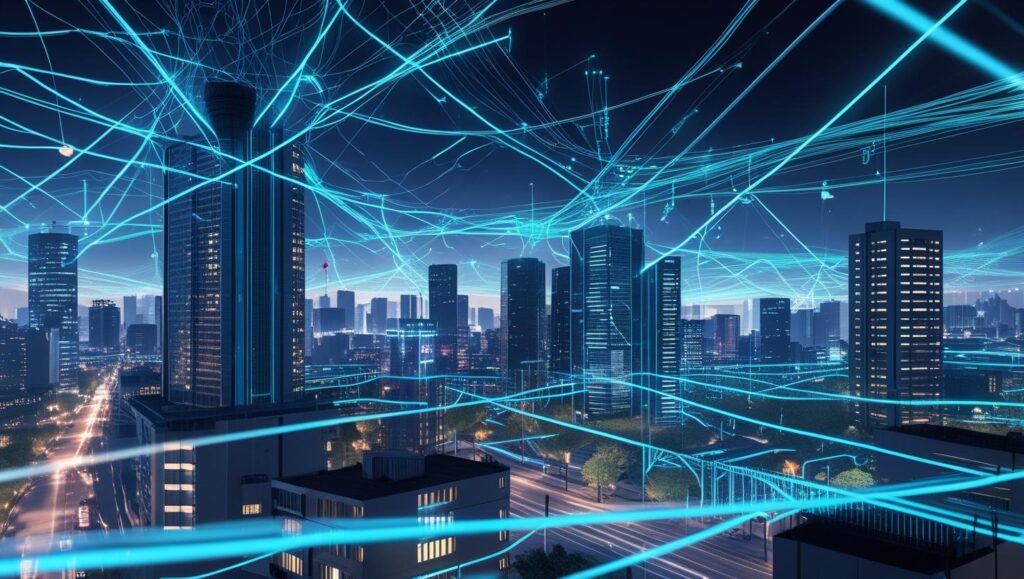Our urban landscapes are evolving at an unprecedented pace, transforming from mere concrete jungles into dynamic, interconnected ecosystems. This evolution is driven by the rise of smart city infrastructure, a sophisticated network of technologies that promises to make our cities more efficient, sustainable, and livable. But what exactly powers this transformation? It’s a powerful trio: tiny sensors, vast streams of data, and seamless connectivity. These three elements are the building blocks of a smarter future, working in concert to create urban environments that respond to our needs in real time. We’ll take a deep dive into the fascinating world of how these components are revolutionizing urban life, from managing traffic to conserving resources and enhancing public safety.
The Foundation: Understanding Smart City Infrastructure
At its core, a smart city infrastructure is a framework that uses Information and Communication Technology (ICT) to enhance the performance and well-being of urban areas. It’s not just about flashy gadgets; it’s about creating a cohesive system where every part works together. The goal is to optimize city services and connect citizens to the urban environment in a more meaningful way. This comprehensive system is built on a few key pillars, which we’ll explore in detail.
The Role of Sensors: The City’s Eyes and Ears
Think of sensors as the nervous system of a smart city. These miniature devices are deployed throughout the urban landscape, from traffic lights and streetlights to public transit and waste bins. They tirelessly collect a vast amount of real-time data, serving as the city’s eyes and ears. This data is invaluable for making informed decisions and automating processes. For example, motion sensors can adjust street lighting based on pedestrian presence, reducing energy consumption. Similarly, air quality sensors provide crucial information about pollution levels, helping city officials take proactive measures. These sensors are the essential first step, collecting the raw information that makes everything else possible.
- Environmental Sensors: Monitor air quality, temperature, and noise levels.
- Traffic Sensors: Track vehicle flow, density, and speed to optimize traffic signals.
- Utility Sensors: Detect leaks in water pipes or monitor electricity usage in real-time.
- Safety and Security Sensors: Include cameras and motion detectors for public space surveillance.
The rise of the Internet of Things (IoT) has supercharged this sensor network. By connecting these devices to the internet, they can communicate with each other and with centralized systems, creating a truly intelligent grid. This interconnectedness allows for complex analysis and automated responses that were previously impossible. For instance, a smart garbage bin equipped with a sensor can alert sanitation crews when it’s full, optimizing collection routes and saving fuel.
The Engine: Harnessing the Power of Data
Once the sensors have collected all this raw information, it needs to be processed and analyzed. This is where data becomes the engine of the smart city. The sheer volume of information collected is immense—often referred to as “big data.” Cities leverage powerful analytics tools and artificial intelligence (AI) to make sense of this data. This allows them to identify patterns, predict trends, and gain actionable insights. For example, by analyzing traffic data, city planners can pinpoint congestion hotspots and redesign road layouts to improve flow. Data is no longer just a collection of numbers; it’s the intelligence that drives urban innovation.
From Raw Data to Actionable Insights
How Data Analytics Transforms Urban Services
Data analytics plays a critical role in transforming raw sensor data into meaningful insights. It helps city administrators understand the pulse of the city and make evidence-based decisions. Here’s a breakdown of how data is put to work:
- Predictive Maintenance: Analyzing data from infrastructure like bridges and public transport vehicles to predict when maintenance will be needed, preventing costly failures.
- Resource Optimization: Using data on energy and water consumption to identify areas of waste and implement conservation strategies.
- Emergency Response: Real-time data from traffic and public safety sensors can help emergency services navigate to incidents faster.

To further illustrate the impact of data in different sectors, here is a table summarizing key applications:
| Application Area | Sensor Data Used | Resulting Smart Solution |
|---|---|---|
| Traffic Management | Vehicle count, speed, congestion levels | Dynamic traffic signal optimization, smart parking systems |
| Public Safety | Real-time video feeds, sound sensors, social media analysis | Predictive policing, faster emergency response, incident mapping |
| Environmental Monitoring | Air quality, water levels, noise pollution | Proactive pollution alerts, smart waste management, flood early warning systems |
| Energy & Utilities | Smart meter readings, grid load, water pressure | Automated leak detection, efficient energy distribution, demand-response programs |
The Lifeline: The Importance of Connectivity
Without a robust communication network, the data collected by sensors and processed by analytics would be useless. Connectivity is the lifeline of a smart city, enabling the seamless flow of information. Various technologies are used to achieve this, from Wi-Fi and cellular networks (like 5G) to low-power wide-area networks (LPWANs). The choice of technology often depends on the specific application. For example, 5G is perfect for applications requiring high speed and low latency, such as autonomous vehicles and real-time video surveillance. Meanwhile, LPWANs are ideal for simple, low-power devices like smart meters and environmental sensors that only need to send small packets of data over long distances.
The Role of 5G and Other Networks
The advent of 5G technology is a game-changer for smart cities. Its unprecedented speed and low latency allow for the instantaneous transfer of massive amounts of data. This is crucial for applications that require real-time responses, like managing a fleet of self-driving cars or enabling remote healthcare services. 5G networks can support a massive number of connected devices, which is essential for scaling up a city’s sensor network without performance degradation. Other connectivity options, like fiber-optic cables and public Wi-Fi hotspots, also play a crucial role in creating a layered and resilient communication infrastructure. This multi-layered approach ensures that data can be transmitted reliably and securely across the city, regardless of the application’s needs.
The Seamless Integration: A Look into the Future
The true power of smart city infrastructure lies in the seamless integration of sensors, data, and connectivity. When these three elements work together, they create a powerful feedback loop. Sensors collect data, connectivity transmits it to a central system, and data analytics processes it to generate actionable insights, which in turn can trigger automated responses or inform policy decisions. This continuous cycle allows cities to become more adaptive and responsive. For instance, in a smart city, a traffic accident detected by sensors could automatically alert emergency services, reroute traffic through connected signals, and notify commuters via a mobile app, all within a matter of seconds. This level of coordination and efficiency is what truly defines a smart city.
The journey towards a smarter urban future is not without its challenges, including concerns around data privacy and cybersecurity. However, as technology advances, cities are also developing more sophisticated methods to protect citizen data and secure their infrastructure. The promise of smarter, more sustainable, and safer urban living is too great to ignore. As we continue to build out these sophisticated systems, we are not just investing in technology; we are investing in a better quality of life for everyone. The combination of sensors, data, and connectivity is not just the future of urban development; it is the present, and it is reshaping our world for the better. Are you ready to live in a city that thinks for itself?



